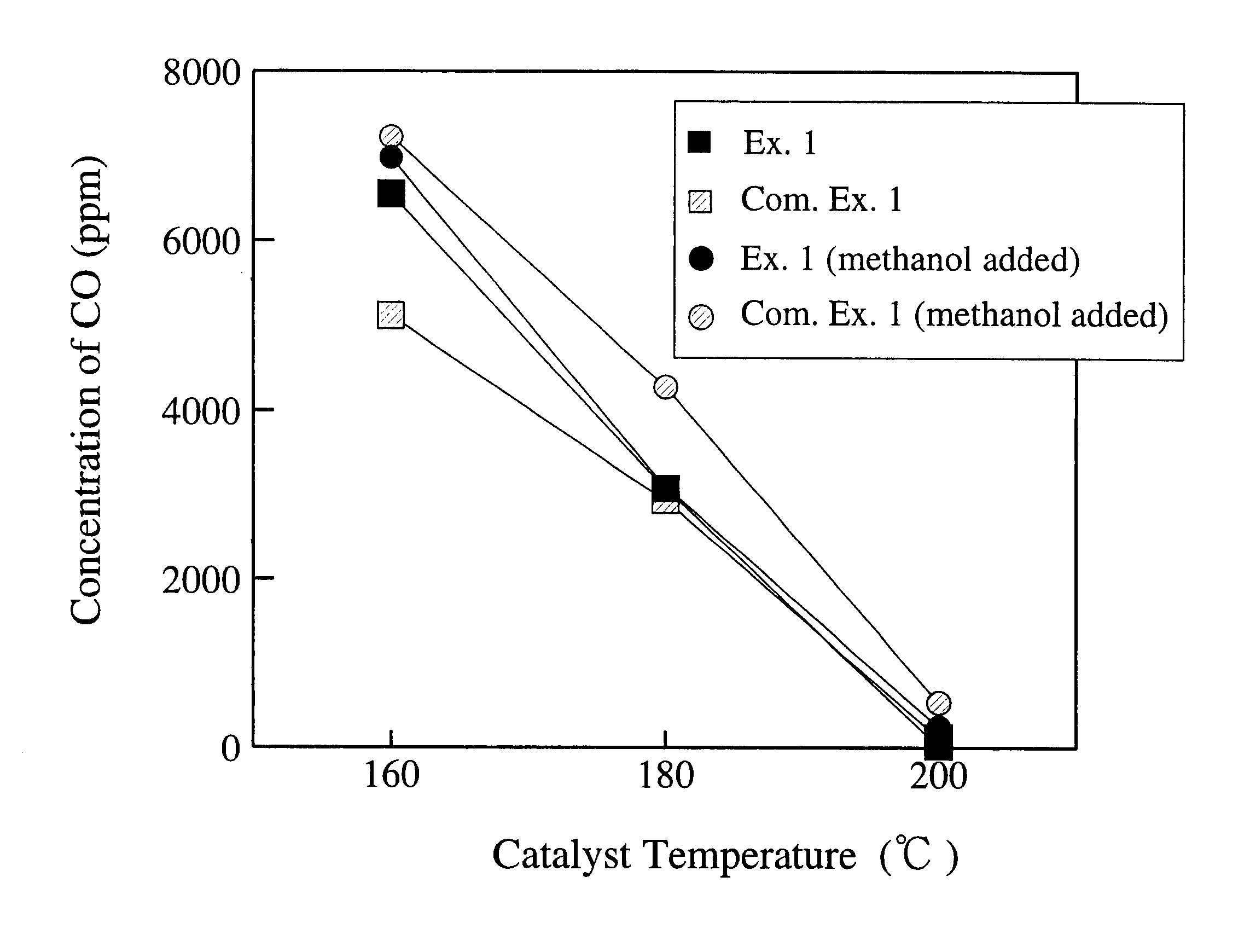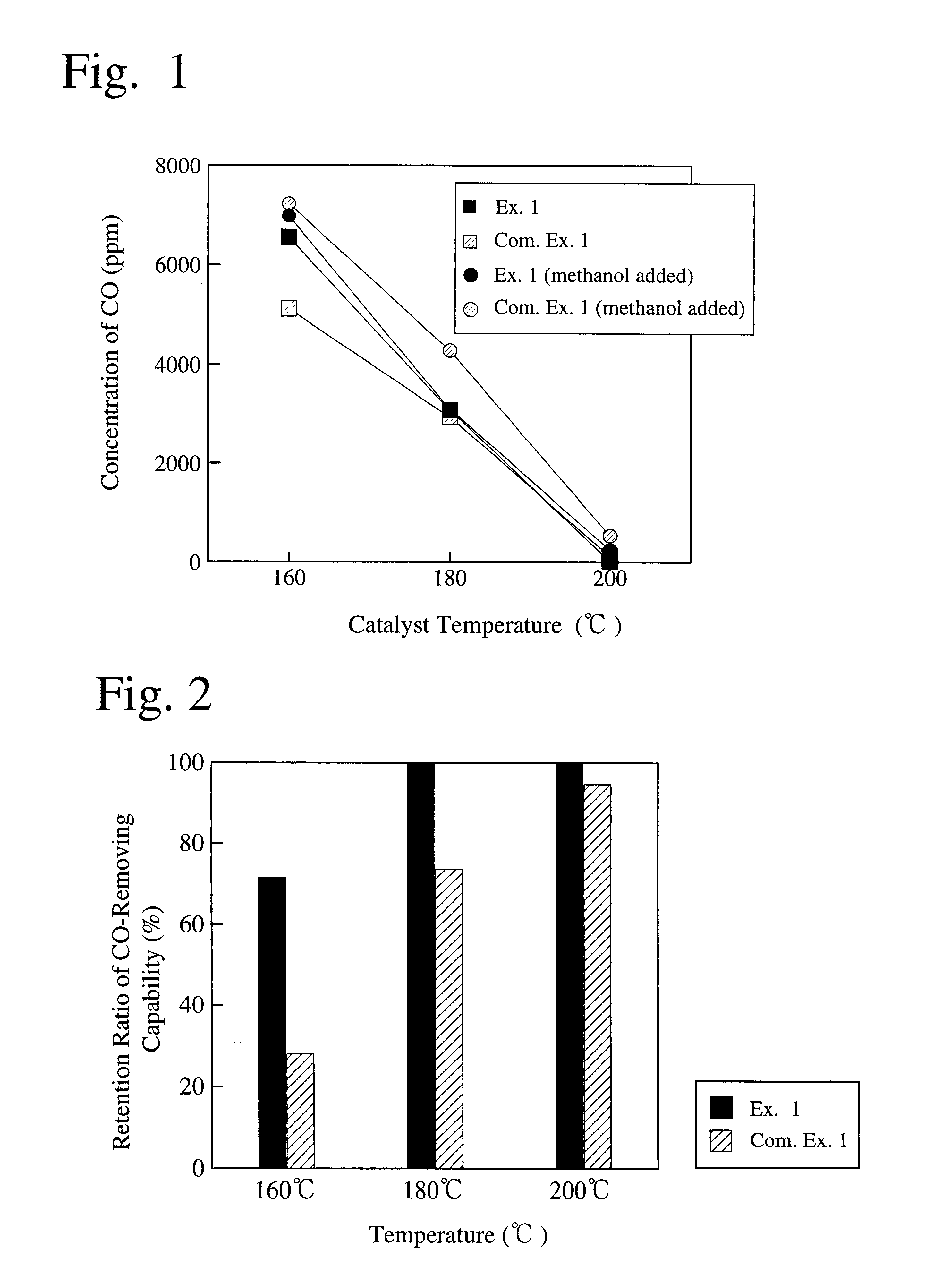Catalyst and method for selectively oxidizing carbon monoxide in hydrogen-containing gas and solid polymer electrolyte-type fuel cell system using such catalyst
a fuel cell system and carbon monoxide technology, applied in the direction of cell components, physical/chemical process catalysts, sustainable manufacturing/processing, etc., can solve the problem of large volume of catalysts, and achieve the effect of large volume of catalysts, and high carbon monoxide removal ratio
- Summary
- Abstract
- Description
- Claims
- Application Information
AI Technical Summary
Benefits of technology
Problems solved by technology
Method used
Image
Examples
example 1
Into a separable flask equipped with a reflux condenser were fed 500 g of aluminum isopropoxide (special-grade chemical available from Wako Pure Chemical Industries, Ltd.) and 3 kg of pure water. The content in the flask was stirred at 80.degree. C. for 24 hours to completely hydrolyze the aluminum isopropoxide to precipitate aluminum hydroxide. The aluminum hydroxide precipitate was washed with a large amount of pure water and then subjected to a heat treatment in an oven at 400.degree. C. for 1 hour to obtain a carrier (boehmite) for catalyst production.
Into a separable flask were fed 0.29 g of chloroplatinic acid (special-grade chemical available from Wako Pure Chemical Industries, Ltd.), 24.9 g of the above-obtained boehmite and 100 ml of water. Further added thereto was an appropriate amount of an aqueous potassium hydroxide solution for pH adjustment to 10, to obtain a platinum slurry.
Separately, 0.18 g of sodium boron hydroxide was dissolved in 13.8 g of water to prepare a re...
PUM
| Property | Measurement | Unit |
|---|---|---|
| Angle | aaaaa | aaaaa |
| Temperature | aaaaa | aaaaa |
| Temperature | aaaaa | aaaaa |
Abstract
Description
Claims
Application Information
 Login to View More
Login to View More - R&D
- Intellectual Property
- Life Sciences
- Materials
- Tech Scout
- Unparalleled Data Quality
- Higher Quality Content
- 60% Fewer Hallucinations
Browse by: Latest US Patents, China's latest patents, Technical Efficacy Thesaurus, Application Domain, Technology Topic, Popular Technical Reports.
© 2025 PatSnap. All rights reserved.Legal|Privacy policy|Modern Slavery Act Transparency Statement|Sitemap|About US| Contact US: help@patsnap.com


